At a glance
Expert’s Rating
Pros
- Understated industrial design that doesn’t scream “it’s a smart lock!”
- Supremely easy to install and set up
- Takes full advantage of Apple HomeKit
- Thread radio onboard for eventual Matter certification
Cons
- Limited to local operation without the presence of a Bluetooth-to-Wi-Fi bridge
- Apple HomeKit integration is easier to achieve than any other type
- Essentially incompatible with Google Assistant (at least until its Thread radio is turned on)
Our Verdict
There is no better smart lock on the market, but buyers will need a Bluetooth-to-Wi-Fi bridge to control it remotely via the internet. Even with that bridge, it’s easier to integrate the Level Lock+ into an Apple HomeKit smart home environment than any other ecosystem (Google Assistant support is essentially nonexistent). Those shortcomings should go away when the lock’s Thread radio is activated.
Price When Reviewed
$329.00
Best Prices Today: Level Lock+
We’ve always liked Level Locks—with the caveat that Apple users will have the best experience with them. That’s the case with the company’s top-of-the-line Level Lock+, which has several advanced features that depend on the presence of an Apple Home hub in your home. The Amazon Alexa experience–via Amazon’s Sidewalk network neighborhood–isn’t quite as compelling, and you can’t integrate a Level Lock+ into a Google Assistant or SmartThings ecosystem at all. But Level’s embrace of Matter over Thread promises to change that–eventually.
Design & build quality
Understated design is the biggest appeal of any Level Lock, and this model is no exception. There’s no way to tell this is a smart lock just by looking at it; in fact, there’s not even any branding on either side of the lock (the company’s logo is stamped on the end of the bolt, where you’ll only see it when the door is open).
Unlike most smart locks, the Level Lock+ won’t have you wrestling with large, heavy components on either side of the door during installation.
Once installed, there’s no keypad or fingerprint reader on the exterior side of your door, and there’s no hulking escutcheon on the interior side housing the motor, battery pack, and circuit board. Everything is contained inside the motorized chassis that goes into the door’s bore hole, and the 3-volt lithium CR2 battery that powers the lock’s motor and Bluetooth and Thread radios fits inside the bolt that travels through the latch bore to lock and unlock the door.
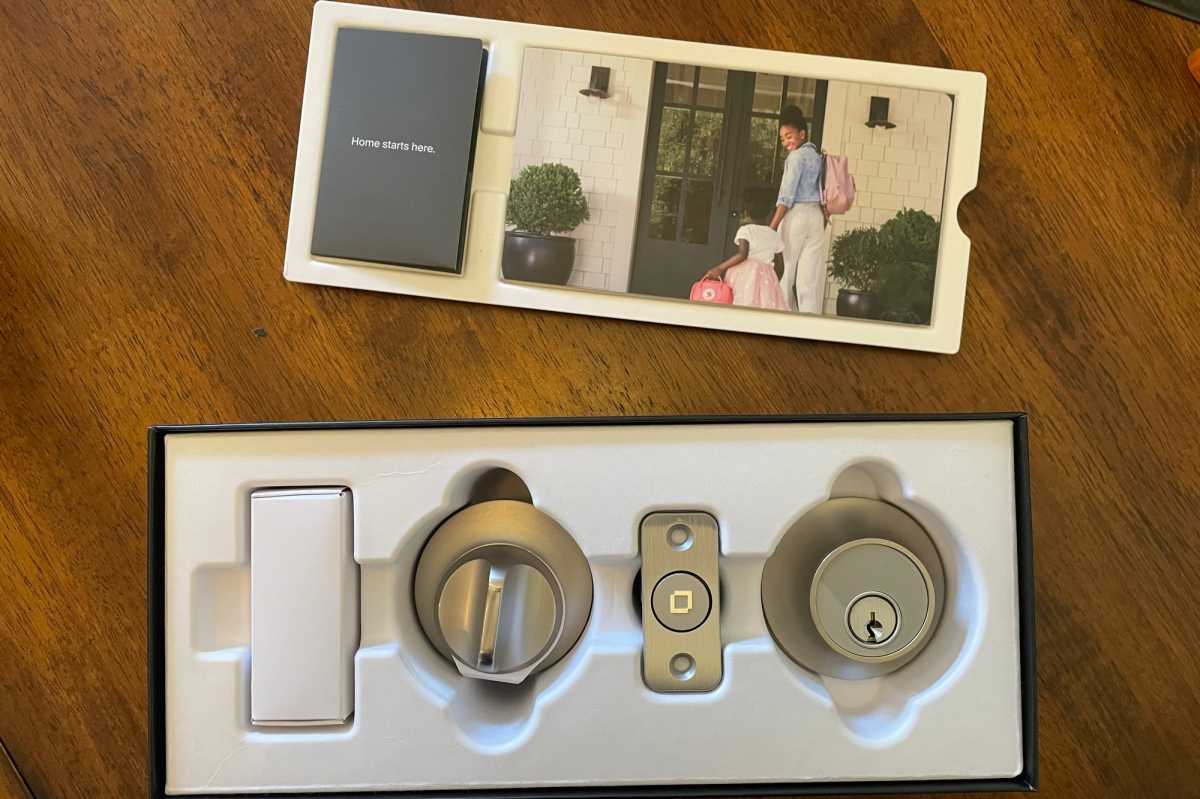
The Level Lock+ is deceptively simple to look at.
Michael Brown/Foundry
Level estimates the Level Lock+’s battery should last about 6 months. The app reports the state of the battery as “Healthy;” “Low,” meaning the battery has a 10 to 20-percent charge remaining and it’s time to replace; and “Critically Low,” meaning the battery can no longer power lock/unlock operations.
This review is part of TechHive’s in-depth coverage of the best smart locks.
The Level Lock+ is a snap to install
Design simplicity renders the Level Lock+ supremely easy to install, assuming you’re replacing an existing deadbolt and don’t need to drill new holes in your door to accommodate it. And as with any smart lock, it’s important that your door fits well inside its frame, so the lock can operate smoothly. If you need to push or pull on your door to get your existing lock to operate, you won’t have a good experience with any motorized lock.
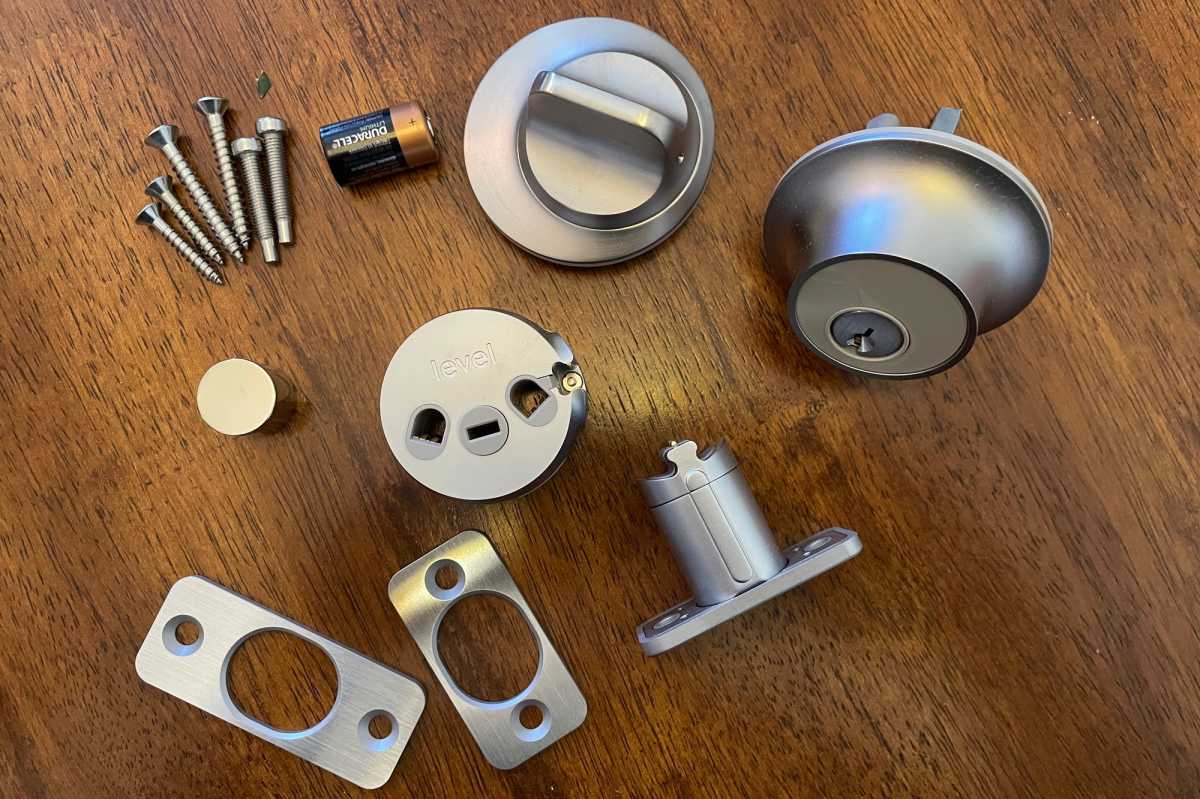
There’s no unsightly box to hang on the inside of your door, and no bulky keypad on the outside of your door (although you can add one if you wish).
Michael Brown/Foundry
Unlike most smart locks, however, installing the Level Lock+ won’t have you wrestling with large, heavy components on either side of the door. And there’s no need to thread a tiny bundle of wires from the exterior escutcheon to in the interior escutcheon for power. A Phillips screwdriver should be the only tool you’ll need. I’ve evaluated a lot of smart locks over the years and nothing else has been this easy to install.
Integrating the Level Lock+ into your smart home ecosystem
The Level Lock+ works great on its own, but like most smart home devices, it’s even better when integrated into a broader smart home ecosystem, and that requires a connection to the internet. As with most battery-powered smart home devices, however, the Level Lock+ can’t connect directly to Wi-Fi, because that technology’s power requirements are just too high—you’d be changing batteries far too often. That’s why smart home device manufacturers utilize technologies like Bluetooth, Thread, Z-Wave, and Zigbee and rely on some other device to act as a bridge to your Wi-Fi network.
The Level Lock+ has both Bluetooth and Thread radios onboard, and Level locks in general are also compatible with Amazon’s Sidewalk neighborhood network. The presence of that Thread radio is for eventual compatibility with the Matter smart home standard; however, that radio is dormant today.

Here’s a view of the bolt element of the Level Lock+ installed in my home’s front door.
Michael Brown/Foundry
As it stands, you’ll need a need a secondary device to act as a bridge between the Level Lock+’s Bluetooth radio and your Wi-Fi network if you want to control the lock remotely via the internet. One method involves Apple’s HomeKit smart home ecosystem and the other relies on Amazon’s Sidewalk technology, and the two are mutually exclusive. But before I get into all that, let’s discuss the Level Lock+ user experience with just Bluetooth, because that doesn’t require you to buy anything else.
The Level Lock+ user experience with Bluetooth only
Once you’ve installed the hardware, added it to the Level app (available for Android and iOS), set up user accounts (admin or guest, the latter of which has limited configuration permissions), the lock is ready to use.
You can lock and unlock the door from the inside simply by operating the thumb turn. Since the lock relies on Bluetooth, you’ll need to have your phone with you to lock or unlock it when you’re outside your home (there are exceptions, which I’ll get to shortly).
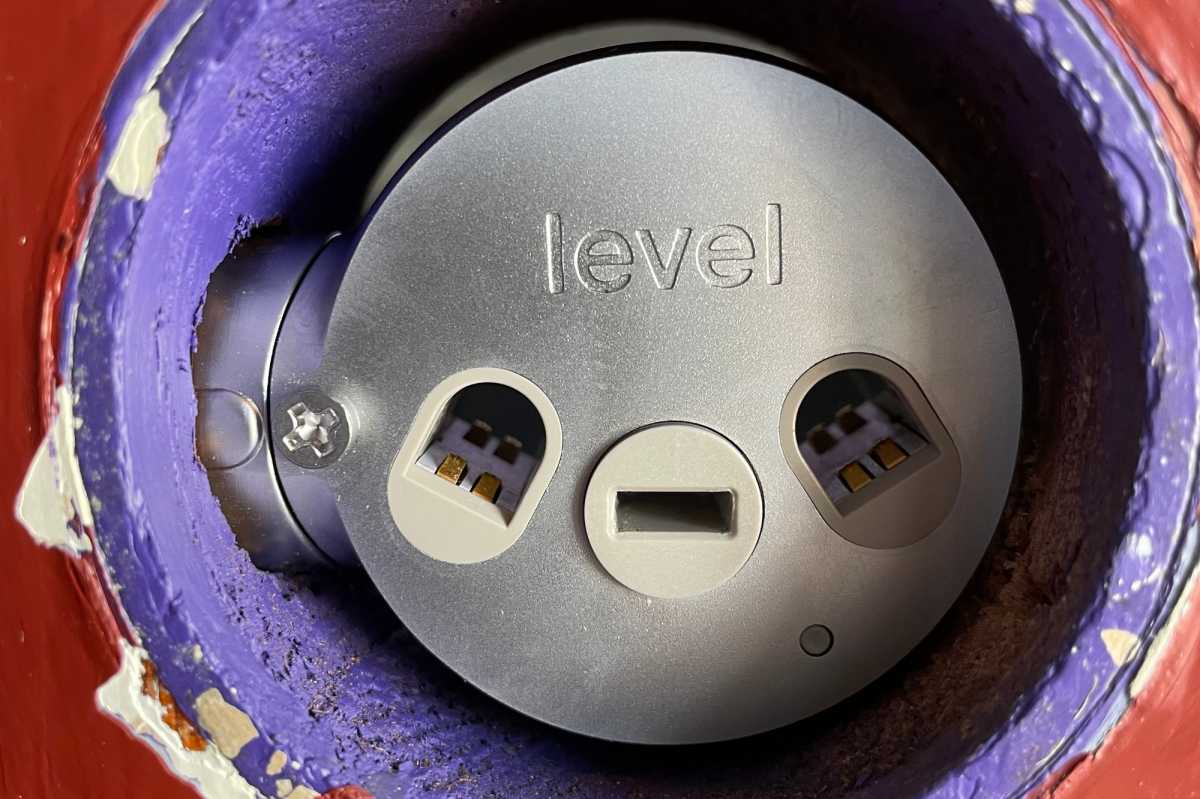
The brains of the Level Lock+ reside in this small assembly that fits inside the door and connects to the bolt.
Michael Brown/Foundry
The default means of doing this is to pull out your phone, open the Level app, and hold down the button with the Level logo in the center of the screen. Alternatively, you can lock and unlock the door with a physical key—a feature you’ll appreciate should the lock’s battery die while you’re out and about, provided you took the key with you. Unlike some locks, the Level Lock+ does not have a USB port for connecting a portable battery, or terminals to which you can touch a 9-volt transistor battery to power the lock long enough to open it.
Pulling out your phone or dealing with keys aren’t the most convenient ways to deal with a lock, especially if you’re trying to stay out of the weather or are otherwise in a hurry. Level provides several better alternatives. First, you can configure the lock with geofencing, so that it automatically unlocks when you cross your geofence perimeter—with your phone, that is—and you come within Bluetooth range of the lock.
Your second option is to enable touch control. Provided you have your phone on your person, you can simply touch the lock to engage the bolt when you leave and touch it to retract it when you return. These two modes are also mutually exclusive, meaning you can’t enable auto-unlock and touch-to-unlock at the same time. There is also a crucial limitation you should be aware of: In order to prevent someone from unlocking the door with a touch once you’ve locked it and walked away, touch-to-unlock is disabled until you cross your geofence circle and then return. So, if you just go outside to fetch your mail from the curb and lock the door with a touch, you’ll need to unlock it via a means other than touch (with the app, a key card, a physical key, etc.).
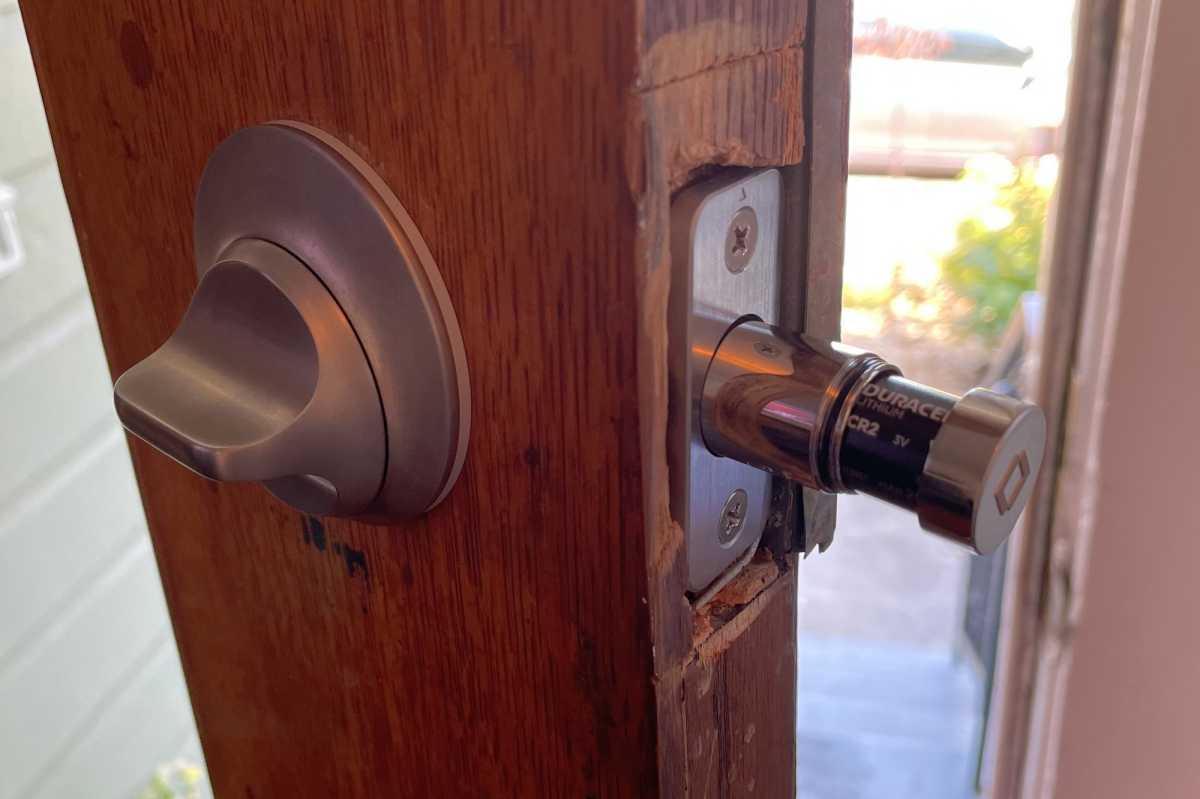
The Level Lock+’s CR123A battery fits snugly inside its bolt. (My 100-plus-year-old door has seen more than its fair share of lock changes.)
Michael Brown/Foundry
As a safety feature, the touch-to-unlock feature also has a user-configurable time limit of one to three minutes. If you cross your geofence, but you don’t touch to unlock before that time elapses, you’ll need to pull out your phone and launch the app or open the lock some other way. If the bolt is already retracted, of course, touching the lock will lock the door.
There are several options for operating the Level Lock+ without your smartphone. You can use the physical key, of course, but Level also puts two near-field communication (NFC) key cards in the box. These will operate the lock when you put one near it (the cards also work with the less-expensive Level Lock – Touch Edition we reviewed in late 2020). While the key card is about as thick as a credit card, you might find its 3-3/8 x 2-1/8-inch dimensions too large to fit in your wallet. Level also makes a much smaller NFC key card that you can put on a keychain, but those are sold separately (a 4-pack of either type of key card costs $20).

The Level Lock+ comes with two NFC key cards.
Michael Brown/Foundry
Your final option is to purchase Level’s LED-backlit keypad ($79, available on Amazon). Mount this accessory on a wall near your lock and you can create up to 50 PINs and provide them to visitors, guests, service providers (cleaning services, contractors), and so on. The Level Keypad works with any Level lock and is especially great for Airbnb-type vacation rentals.
How to use the Level Lock+ to allow temporary access to your home
The Level Lock+ offers several options for granting temporary access to your home. First, you can set up two types of guest access: verified or unverified.
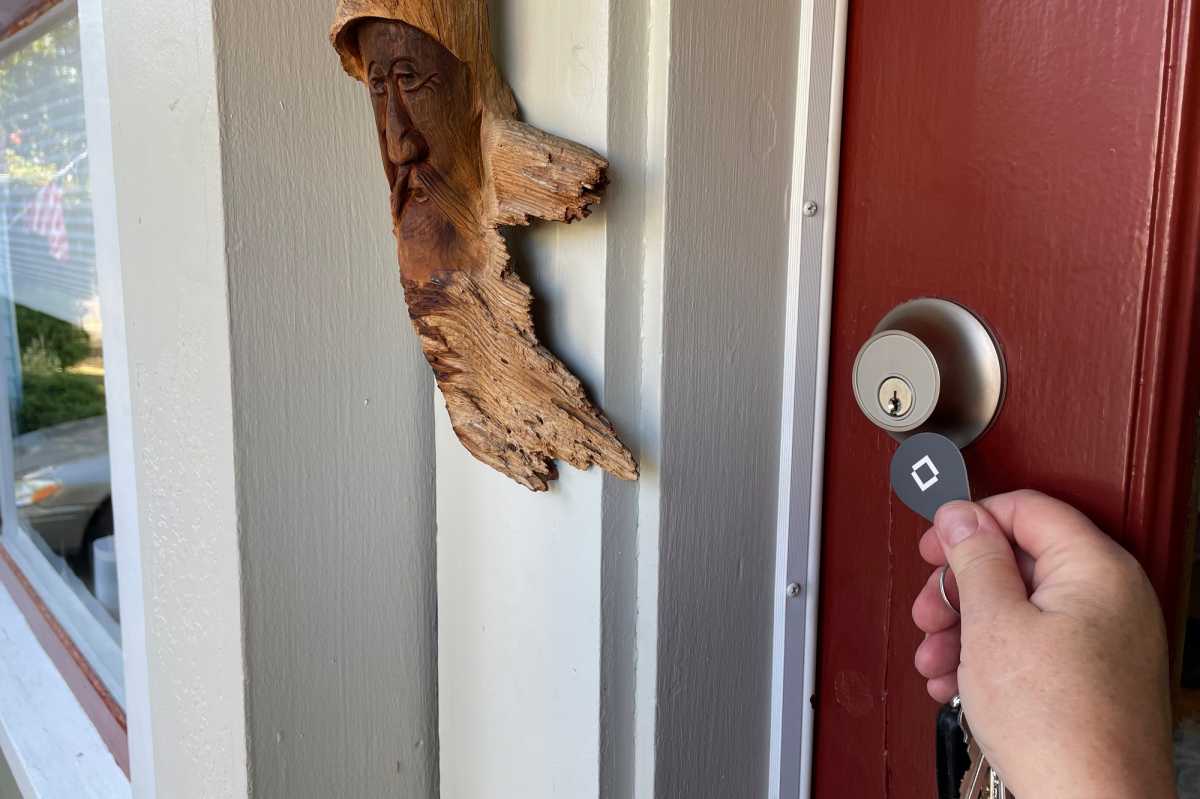
You can buy much smaller key cards that will fit on a keychain. These cost $20 for a 4-pack.
Michael Brown/Foundry
When a verified guest (such as a family member) accepts the invitation you send, they’ll need to download the Level app, create an account, and protect it with a password. They’ll receive a 5-digit verification code and then a recovery key they can use to regain access if they forget their password or if they need to re-install the app. Verified guests can operate the lock via Bluetooth, and they can enable or disable the auto-unlock and touch-to-unlock features.
When an unverified guest receives your invitation, they’ll also need to download the app, but they can decline the prompt to create a Level account by choosing the “Continue as a guest” option. An unverified guest will see a warning that if they log out of the Level app or uninstall it, they will lose access to the lock. Unverified guests can lock and unlock only using Bluetooth, and they cannot enable the auto-unlock and touch-to-unlock features.
If you want to grant access to a group of guests (for example, if you’re inviting a bunch of friends over for a backyard barbecue), you can create what Level calls a Pass. You give the pass a name, set a starting date and time when the pass will be active and an end date and time when it will expire, and then you share the link the app creates for you to your guests via text message or email. Anyone with the pass will be able to open the lock when they come within Bluetooth range of the lock. Passes can be revoked at any time. You can also create codes for Level’s keypad device.
Finally, you may want to designate a secondary admin, such as your spouse. Only users with admin accounts have full control over the lock, including the ability to add and remove other users.
Now let’s discuss integrating the Level Lock+ into your choice of smart home ecosystem.
The Level Lock+ experience with Apple HomeKit

Touching and holding the logo in the center of the app (left) locks/unlocks, the center screen shows the lock’s activity history, and the third screen shows your options for sharing access to the lock.
Michael Brown/Foundry
Level’s founders are Apple alums, so it’s no surprise that the company’s products work best in an Apple environment, and that’s how I conducted this review (I’ll discuss the Amazon Sidewalk experience in a bit).
Taking full advantage of any Level Lock’s HomeKit features requires the presence of an Apple home hub, including a HomePod or HomePod mini smart speaker or an Apple TV set-top box. One of those devices is required if you want to remotely control a Level Lock via the internet, but they also allow you to unlock the door using a Home Key stored in your Apple Wallet. Once you’ve created a Home Key, you can just hold your iPhone (XS or later) or Apple Watch (Series 4 or later) next to the lock to unlock it. As an added security precaution, you can set this feature to require your iPhone to be unlocked with your PIN or with Face ID. This is accomplished by toggling Express mode off in the Home app.
You can also use Siri voice commands to lock and unlock your Level Lock+, but if you’re speaking to a HomePod, you must confirm either action with your unlocked iPhone or Apple Watch.
The Level Lock+ experience with Amazon Sidewalk
As I said earlier, the Thread radio on the Level Lock+ is currently dormant. Until it’s enabled—and, presumably, the lock becomes a Matter-certified smart home device—the only other way to control the lock over the internet is via Amazon’s Sidewalk neighborhood network. And for now, the only means of doing that is with a Sidewalk-compatible bridge. Although some Amazon Echo devices can act as Bluetooth-to-Sidewalk bridges, Level has so far only certified three Ring devices as such.
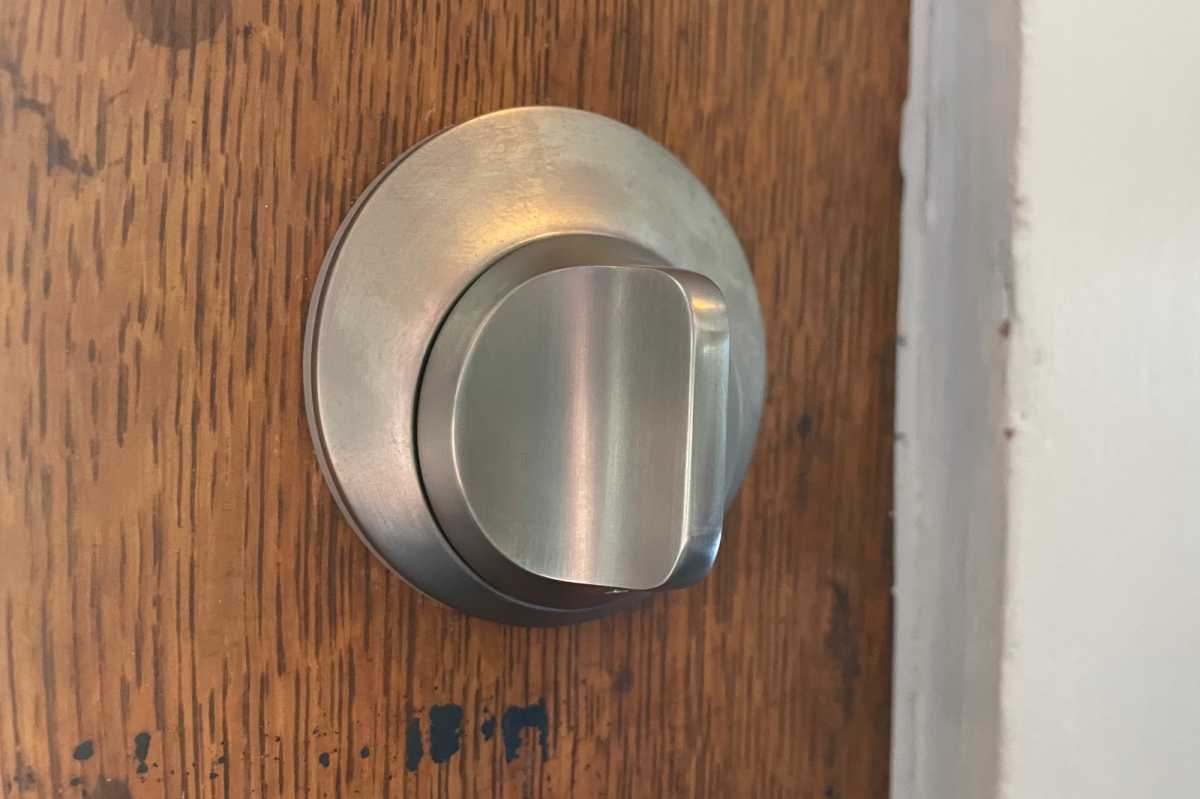
The interior side of the Level Lock+ is as elegantly simple as its exterior side.
Michael Brown/Foundry
Specifically, Level has certified the Ring Video Doorbell 2, the Ring Floodlight Wired Pro, and the Ring Video Doorbell Pro 3. Whichever Sidewalk bridge you choose, it must be within Bluetooth range of the lock. All three of those Ring devices offer the reliability of wired power, but one of those doorbells would be more aesthetically appealing than dual floodlights on your front porch.
Once you have a Sidewalk bridge and have added the Level Lock+ to your Ring app, you can control the lock using the Ring app from anywhere you have internet access. Assuming your Ring camera or doorbell has a view of the area around the door in which the Level Lock+ is installed, you’ll be able to see your visitors and remotely unlock the door for them—and lock it behind them, if you choose. You’ll also be able to add Level’s Alexa skill, integrating the lock into your Alexa smart home system, so you can control it with voice commands.
Specifications
- Wireless connectivity: Bluetooth, Wi-Fi (bridge required), Thread (currently dormant)
- Supports geofencing? Yes
- Lock/unlock methods: Physical key, touch, NFC key card, Android or iOS app (bridge required to control via the internet), Apple Home Key (bridge required), voice (bridge required), Level keypad ($79 accessory)
- Revocable guest access? Yes, including with time and date restrictions
- Matter certified: Not yet
- Battery power: CR123A (included)
- Backup power: None
- Available finishes: Satin nickel, satin chrome, polished brass, matte black
Should you buy a Level Lock+?
The Level Lock+ is the absolute best smart lock for anyone who wants convenient, local control. The picture is more complicated for anyone who wants to control their smart lock over the internet or who wishes to integrate a smart lock into their broader smart home system.
Apple users with HomeKit hubs (or who don’t mind buying one) will be happiest. Anyone using an Android or iPhone in the Amazon Alexa ecosystem with a compatible Ring device (or who don’t mind buying one) should also be happy with this lock. Folks who have settled on Google Assistant or Samsung SmartThings for smart home control will need to wait for Level to turn on that Thread radio and achieve Matter certification. I predict the wait will be worthwhile–assuming the wait is reasonable.
That leaves the universe of people with smart home systems that use connectivity technologies other than Bluetooth to control integrated smart locks: ADT, Vivint, and other services that use Z-Wave, for example. I happen to use Vivint, so among other things, I would need to give up the convenience of having my smart lock automatically disarm my alarm system when I enter my PIN on a Kwikset lock’s keypad. So far, I haven’t missed that feature one bit.

